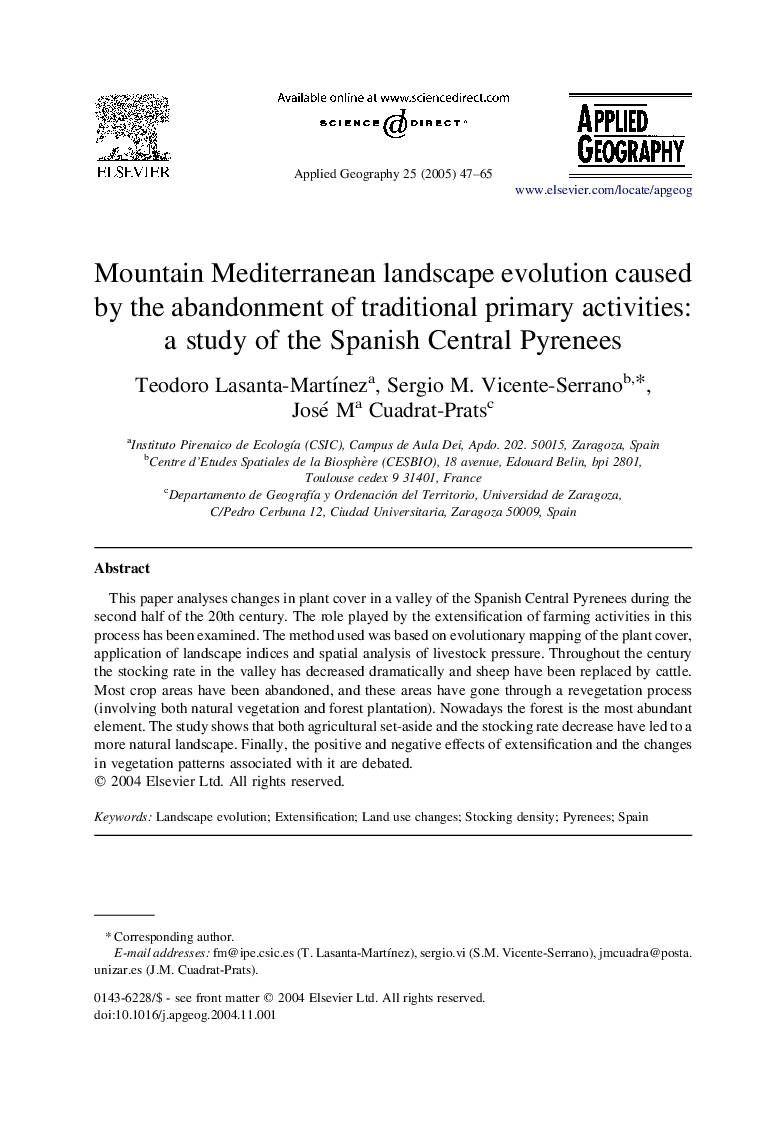| Article ID | Journal | Published Year | Pages | File Type |
|---|---|---|---|---|
| 10249843 | Applied Geography | 2005 | 19 Pages |
Abstract
This paper analyses changes in plant cover in a valley of the Spanish Central Pyrenees during the second half of the 20th century. The role played by the extensification of farming activities in this process has been examined. The method used was based on evolutionary mapping of the plant cover, application of landscape indices and spatial analysis of livestock pressure. Throughout the century the stocking rate in the valley has decreased dramatically and sheep have been replaced by cattle. Most crop areas have been abandoned, and these areas have gone through a revegetation process (involving both natural vegetation and forest plantation). Nowadays the forest is the most abundant element. The study shows that both agricultural set-aside and the stocking rate decrease have led to a more natural landscape. Finally, the positive and negative effects of extensification and the changes in vegetation patterns associated with it are debated.
Related Topics
Life Sciences
Agricultural and Biological Sciences
Forestry
Authors
Teodoro Lasanta-MartÃnez, Sergio M. Vicente-Serrano, José Ma Cuadrat-Prats,
